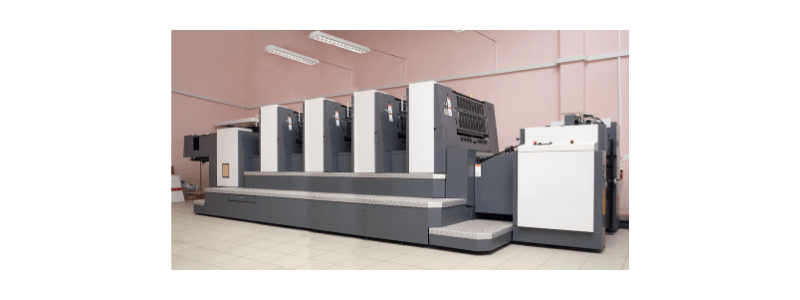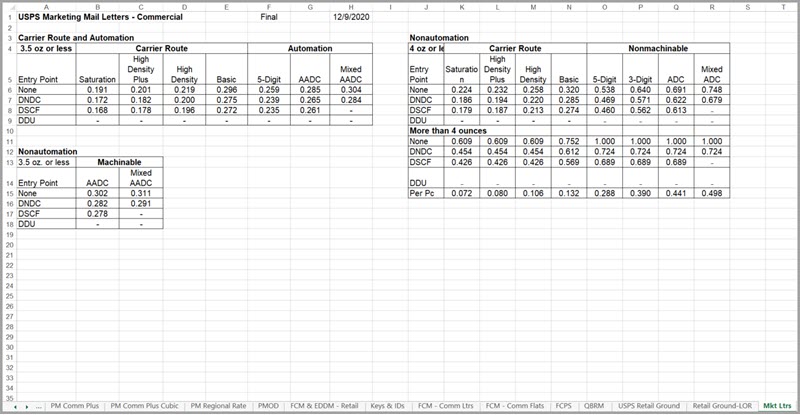
The rise of the digital mail house empowers marketers to access the expertise and experience of the traditional lettershop through easy to use and affordable software.
For many companies, direct mail offers a higher return on investment than any other media, but a high-performance direct mail marketing program can be even more profitable if you get the same results, but also reduce your costs.
One seemingly simply way to save money is to get better discounts on postage. It seems simple, but jumping through all the hoops that the US Postal Service (USPS) has put in place just makes many marketing professionals shake their heads and give up on that idea.
What is a mail house?
Traditionally, a mail house, or lettershop, is a business staffed by mailing and postage experts who help clients optimize their direct mail programs. Think of a mail house as a specialty direct mail consulting firm. Often, they will also own printing and mailing equipment so they can be a one-stop shop for large scale direct mailers.

Why use a mail house or lettershop? Because the world of printing and mailing is complicated, and to do it well it requires deep experience and expertise.
The mailing and postal experts are able to advise you on ways to plan and implement direct mail campaigns so that you can get the best possible deals on printing and postage.
That expertise can add up to big savings and more efficiencies over time (and over large volumes) because the tactical execution of actually getting mail delivered can make a big difference in response rates, and more importantly, your total return on investment.
Why don’t all direct mailers use mail houses?
If the efficiencies and savings that mail houses and lettershops deliver are so dramatic, why then don’t all mailers use them?
The reason is simple. That expertise can be costly. Spread over large mail quantities, the cost isn’t as much of an issue, but if you’re sending small quantities, that expertise gets even more expensive on a cost-per-piece basis. That’s why big mailers use mail house while smaller mailers often don’t.
If you’re not sending huge volumes of mail, then that expertise is very expensive on a per piece basis. As a result, big mailers often use mail houses, and small mailers often don’t.
The rise of the digital mail house
A digital mail house combines the best of the expertise of traditional lettershops with the speed, efficiency and precision of modern cloud-based software.

So if you can’t afford or don’t want to engage with a mail house, what do you do? Stick some labels and stamps on your mailers and drop them in a nearby mailbox?
You could, I guess. But that’s not very efficient and can cost way more in postage because you’re not taking full advantage of automation. And automation is the secret to getting the best possible postage rates. You see, USPS offers some steep discounts these days, but you need to pay closer attention to making sure it can be automated across the USPS system.
Many savvy marketers are taking advantage of direct mail automation software that is designed to replicate the expertise of the traditional mail house. Think of taking the knowledge and experiences of the lettershop consultants and embedding it in software that is easy to use and inexpensive.
What do mail houses do? In a nutshell, they automate processes using advanced equipment and also provide professional expertise to help you make the most of automation. And that can save you thousands of dollars in postage costs alone. Direct mail automation is the equivalent of the digital mail house.
From lettershop to smart digital platform:
How to take full advantage of automation and postal discounts

The idea of a mail house or lettershop as an actual “house” or “shop” seems kind of quaint – especially in an environment where automation has grown much more efficient and far more sophisticated. It wasn’t too long ago when you’d visit a mail house and see machinery that would insert letters into envelopes, stick labels onto mailers, and sort mailings into bundles to be delivered to the nearest bulk mail USPS facility.
Like many business processes, actual machinery has become less important than the technology that makes it work. And the technology platforms we use make all these processes far more efficient.

So when we designed Postalytics, we created a platform that makes it easy to create mailings, manage your lists, and evaluate results through a one digital platform. That alone represents excellent value and automates your own processes.
But we also built a “digital mail house” into Postalytics that offers all the services a traditional mail house offers so you can take full advantage of the automation that USPS requires to get the lowest postage rates.
In a previous post, I explained how USPS Intelligent Mail Barcodes are now required to get those low postage rates. After all, with the advanced technology now available for imaging and scanning, USPS not only gives you financial incentives to automate mailings, but also makes it possible for you to find out when mail is expected to be delivered and get confirmation that it was actually delivered.
That’s great news, of course, but wow, it makes things even more complicated! Even just a few years ago, postage rate classifications seemed complex enough, but today’s rate schedules seem to be written in a different language. Take a look:

This is one page of a complex 28 tab USPS Pricing Spreadsheet.
Can you possibly understand it all? Fortunately, you don’t have to. We’ve built our platform to make it possible to take advantage of all the discounts available to you.
Boost your ROI by 50% or more

Automation becomes even more important because the financial incentives actually penalize mailers who don’t take advantage of technology. Even if your response rates remain consistent, automation alone delivers a great ROI. Here’s an example:
Let’s say that you’re in the HVAC maintenance business and your objective is to sell ongoing maintenance contracts. We’ll assume that you have an offer that gets you a 2 percent response rate and that through testing, you know that you can convert 20% of those leads into sales, but that it takes 10 additional mailings to do so.
Based on the lists you use and the geographies you serve, a mailing will cost you 80 cents per piece if you take full advantage of automated postal discounts, but $1.20 each if you don’t.
Here’s a comparison that shows how merely taking advantage of postal discounts alone can add up to more savings and a big boost to your return on investment for each 1,000 pieces you mail for lead generation:
| Best USPS discount available | No postage discounts | |
| Quantity mailed | 1,000 | 1,000 |
| Cost per piece | $0.80 | $1.20 |
| Total cost for mailing | $800 | $1,200 |
| Response rate | 2% | 2% |
| Responses | 20 | 20 |
| Cost per response | $40 | $60 |
| Additional mailings 10 per lead generated | 200 | 200 |
| Cost for additional mailings | $160 | $240 |
| Total mailing cost | $960 | $1,440 |
| Conversion to sale rate | 20% | 20% |
| Sales | 4 | 4 |
| Cost per sale | $240 | $360 |
It’s not too hard to see that paying 50 percent more for postage means you’re paying 50% more not only to get a lead, but also convert that lead to a sale. That’s a huge difference.
More efficiency through one automated platform

Even in the old days, lettershops often offered more services than merely stuffing envelopes and getting mail out the door.
In some cases, mail houses were created as divisions of printing companies because those organizations realized that many customers were printing materials to send by mail. Offering mailing services not only added convenience for clients but made those operations more profitable.
On the flip side, some companies that started out as mail houses began offering printing services so they could become a “one-stop shop” for all your direct mail needs.
As direct mail emerged as a marketing discipline of its own — direct response marketing — these companies began offering other related services such as:
- List maintenance and list brokerage: Your mail house could help you find lists to use and maintain your internal database of customers and leads
- Personalization: As direct mail became more sophisticated, new imaging technologies made it possible to make direct mail even more personal – not only addressing recipient’s by name, but varying messages based on database information
- Complete digital printing: More direct mail marketers began to realize that planning mailings so thousands could be sent at once to save on printing costs was rapidly becoming obsolete. That’s because new imaging technologies don’t require high set-up costs that can increase the price per piece of small mailings.
The dawn of the digital mail house
I think I’ve made it clear that If you’re serious about direct mail you should be using a mail house. That’s because while direct mail can deliver a great ROI, there are plenty of complexities to deal with.
That’s why we’ve embedded the equivalent of a mail house directly into Postalytics – a “smart home” for direct mail that eliminates manual processes.
Even better, we make it possible for all mailers regardless of volume to get automation and presorting pricing advantages. You can send one piece of mail per day for almost the same cost per piece as if you sent thousands at once – even personalized mail. No minimums to worry about – ever.
Getting your direct mail house in order has never been easier thanks to Postalytics!
About the Author

Dennis Kelly
Dennis Kelly is CEO and co-founder of Postalytics, the leading direct mail automation platform for marketers to build, deploy and manage direct mail marketing campaigns. Postalytics is Dennis’ 6th startup. He has been involved in starting and growing early-stage technology ventures for over 30 years and has held senior management roles at a diverse set of large technology firms including Computer Associates, Palm Inc. and Achieve Healthcare Information Systems.
